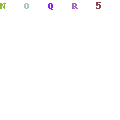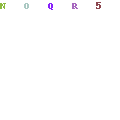Types of Warts and Their Treatment With Ayurveda
>> Dont Even Think Of Trying Other Products untill You Read This <<
Warts are small skin tumors that can arise unexpectedly and anyplace on the skin. They are generally round in shape and exfoliate like a cabbage. Warts can occur anywhere on the body, but they are more common on the hands and the feet.
Depending on their location and their shape, there are different types of warts. They are: - (i) Common warts ? These occur generally on the hands and the knees. They are simply upraised surfaces on the skin.
(ii) Flat warts ? These can occur on the face, hands, legs and knees. These warts are flat and are almost of the color of the skin.
(iii) Filiform warts ? These are present only on the face. They may be near the eyelids or the lips. These warts are fingerlike or threadlike in appearance.
(iv) Plantar warts ? These are painful warts that are generally formed on the soles of the feet.
(v) Mosaic warts ? These are clusters of plantar warts.
(vi) Genital warts ? These are warts that grow predominantly on the genital areas.
Medically speaking, warts are harmless. Some warts will heal themselves with time. But even then, people are always trying to remove the warts because it poses a cosmetic problem. Most times, warts can be removed, but they arise again. However, there are many safe ways in Ayurveda to heal warts with a permanent solution.
Warts may be caused due to any of the three doshas. The dosha generally influences where on the body the wart occurs.
(1) Useful Herbs for Warts
1. Banyan (Ficus religiosa) The milky sap obtained from the green leaves of the banyan tree is very effective in the treatment of warts. It helps the skin to become smooth and the wart eventually falls off.
2. Dandelion (Taraxacum officinale) The dandelion sap is very effective in the removal of warts. The cut end of a dandelion root is rubbed onto the wart so that the milky sap rubs on the warts. Within a few days of this kind of treatment, the wart would fall off.
3. Euphorbia (Euphorbia hirta) The euphorbia plant is ground into a paste and applied onto the warty skin. The milky juice exuded by this plant is good in the treatment of warts.
4. Indian Sorrel (Oxalis corniculata) The leaves of the Indian sorrel are effective in the treatment of warts. They can be used in various ways for the purpose. One way is to directly apply a paste of the leaves onto the warts. A poultice of the leaves directly applied over the warts also helps in the treatment. The juice of the leaves can be mixed with several other beneficial ingredients for better results.
5. Rough Chaff (Achyranthes aspera) The ash of the rough chaff is rubbed over warts as a traditional remedy. It is beneficial in the removal of warts.
(2) Dietary Treatments for Warts
There are no specific dietary guidelines in Ayurveda for the treatment of warts.
(3) Ayurvedic Treatments for Warts
The Kaseesadi taila is recommended in Ayurveda for the treatment of warts. The rest of the treatment methods pertain to the application of useful herbs with bandages.
(4) Home Remedies for Warts
1. Mix the juice of the Indian sorrel plant with some juice of an onion. Apply this on the warts to remove them.
2. Mix the juice of the Indian sorrel with black pepper and ghee. If the warts or excrescences of the skin are caused due to biliousness, then this is a good remedy to eliminate them.
3. Take a teaspoon of juice of the coriander leaves along with a pinch of turmeric in it. Take this on a daily basis.
4. Take a slice of raw potato. Rub it on the wart for about ten minutes each day. This method will help remove the warts.
5. Take the peel of a banana and keep its inner side on the wart. Tie it up like a bandage. Change it twice a day. Keep this constantly on the wart until the wart disappears.
6. Castor oil can be applied regularly on the warts. This will help the warts to become supple and finally disappear. Instead of castor oil, camphor oil can also be used in the same manner.
7. Take a single clove of garlic and crush it, but not very finely. Keep this garlic clove on the wart. Then fix it in that position with a bandage. This helps in the treatment of warts.
8. A similar kind of bandage treatment can be done with the juice of grapefruit also. Put a drop of the fresh grapefruit juice on the wart. Then cover the area with a bandage. Do this three to four times in a day. Continuous application will help the wart to disappear.
9. Apply the oil of the tealeaves onto the warts every night before going to bed. Continue this application for a fortnight. You will find that the wart has slowly dissolved and disappeared.
10. Take a fresh fruit of amalaki (Indian gooseberry). Rub it on the wart several times a day till it is properly dabbed in its juice. Alternatively, you can also put a few drops of the juice of the amalaki onto the wart and then keep it covered with a bandage. If you don?t get hold of amalaki, then any vitamin C tablets can also be crushed and kept onto the warts, fixed in place with a bandage.
Read more on wart treatment by Ayurveda and wart removal Home remedies at http://www.ayushveda.com
Read more about Ayurveda at World's Largest Portal on Ayurveda and Ayurvedic Remedies: Ayushveda.com - The Free Ayurvedic Encyclopedia
Labels: anal_picture_skin_tag, anal_picture_wart, anal_removal_skin_tag, cancerous_mole, cream_skin_tag, freezing_skin_tag, hpv_picture_symptom_wart, mole_rat


